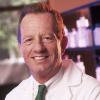news
Sustainability Spotlight: Dr. John Crittenden
Primary tabs
I met with Dr. John Crittenden in the Brook Byers Institute for Sustainable Systems (BBISS) in an open space with graduate students pecking away at their keyboards. We dove right into how he got involved in sustainability and how his career has mirrored the growth of the green movement.
When he first entered the professional world, the primary focus of his work was developing technologies to meet regulations. The goal was not to reduce carbon or water footprints but rather to reduce fuel consumption. Even though environmentalism wasn’t driving his work, the focus on efficiency did have the secondary benefit of reducing environmental impacts. Dr Crittenden, “I wasn’t making a big difference. So the next step up is beginning to look at sustainability issues.” Sustainability issues get you to look at three things: the environment, human health, and the economy. At this point, Dr. Crittenden started looking into how to make urban systems more sustainable. Infrastructure created to support these urban systems uses an enormous amount of materials and there is much work to be done to make infrastructure systems sustainable.
Since 2009, Dr. Crittenden has led the BBISS at Georgia Tech. He took a moment to describe some of the Institute's projects:
"BBISS has worked on problems such as the decentralization of energy and water. In the past our infrastructure was optimized in a silo fashion, where each provider focuses specifically on their product. We look at connecting those and optimizing the system as a whole. An example that we have looked into is a combined heating cooling and power system. Basically it is a device that creates electrical energy and gives off heat. If this is close to where you live, then you can utilize that heat. In terms of water, Atlanta gets about 45 inches of rainwater per year. According to our calculations that could provide 40-50 percent of water demands. Collecting that water for use also reduces the energy impact associated with getting water because it no longer needs to be pumped from a plant to your sink. All of these play into community design which is truly dictated by what the people living there want. For a grant, we are analyzing surveys from the Atlanta Regional Commission to help determine the best way to integrate more sustainable systems into an already large infrastructure system. We have learned that the adoption rate of technologies is higher when the technologies are provided in packages and systems."
As Dr. Crittenden began to dig into the nitty gritty of his projects, I asked him to talk about sustainability from a broad perspective. He came back with a unique definition of sustainability derived from his years of engineering experience. He stated, “To achieve overall sustainability, we need to change the anthroposphere to exist within the confines of nature. That means two things: man’s activities cannot overwhelm the natural cycles . . . [and] we must use renewable resources.” He followed saying, “this is not even considering the social aspect.” He elaborated by describing how humans are interfering with and abusing natural cycles. "The cycle for phosphorus is disrupted by mining it to use as a fertilizer; interrupting the carbon cycle is causing global warming; the water cycle that shows such a misalignment of resources that many places in the world don’t have access to water. In terms of using renewable resources, only about 20 percent of the 79 gigatons of material in the world are renewable." He emphasized that society has to work on closing the loop and the life cycle of those materials.
From here, Dr. Crittenden broke into how to think about sustainability:
"What is the difference between a traditional engineer and someone who focuses on sustainable engineering? I’ll tell you. An example is the New York water supply. So they were going to decide how to treat the water that’s coming down from the Adirondacks into the city and how they were going to provide safe water. And the main concern was turbidity (particles) and pathogens. So if you are a run of the mill, ordinary engineer who is focused on disciplinarily and water treatment, your solution would be to build a water filtration system. Wrong. You need to go upstream and find where the particles and pathogens come from then you find out if I pay the farmers to have easements near waterway and protect the watershed, I’m not going to have any particles and I’m not going to have any pathogens. And I don’t need to build a water filtration plant. If you have been trained in the discipline, you tend to really focus on that as a solution. As opposed to taking a step back and asking what is the problem, what is the whole list of solutions you could have then boom you see which ones are going to have greater sustainability performance." He elaborated by explaining that sustainability is not a field in itself, but rather an idea to be applied to other fields.
When I asked about the global environmental goals and initiatives, he became a realist and said that the world will not be able to achieve the goals of the Paris Climate Accords “by any stretch of the imagination.” In fact, Dr. Crittenden believes the current line of thought is not good enough to solve the biggest issues of our time. He saw a big problem with the G12 discussing how to make our society more sustainable even though they are largely the cause of environmental issues for the underdeveloped world which is the most affected by climate change. This disparity shows that no one is having the right conversation about how sustainable the global market economy is. The conversation is not there. People are thinking more about making a plastic bottle out of plants.
Status
- Workflow Status:Published
- Created By:Brent Verrill
- Created:03/15/2017
- Modified By:Brent Verrill
- Modified:03/15/2017
Categories

